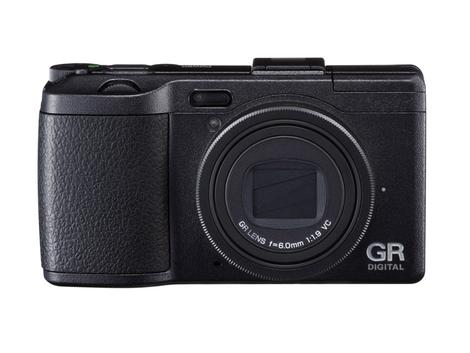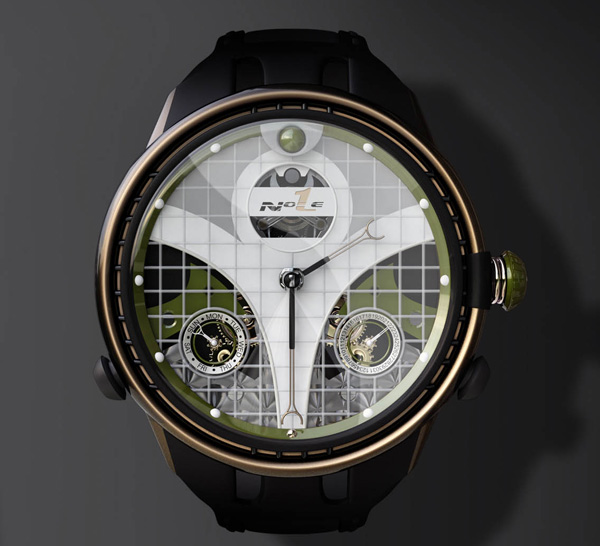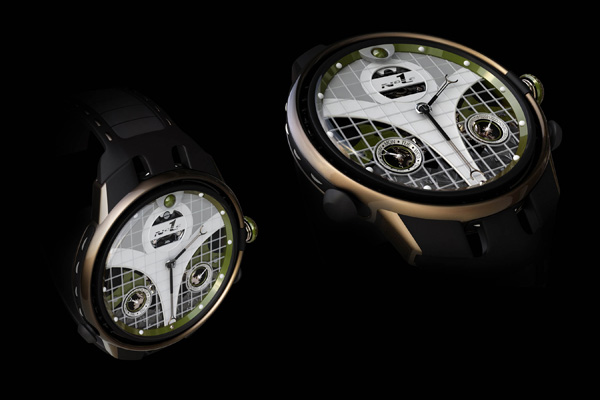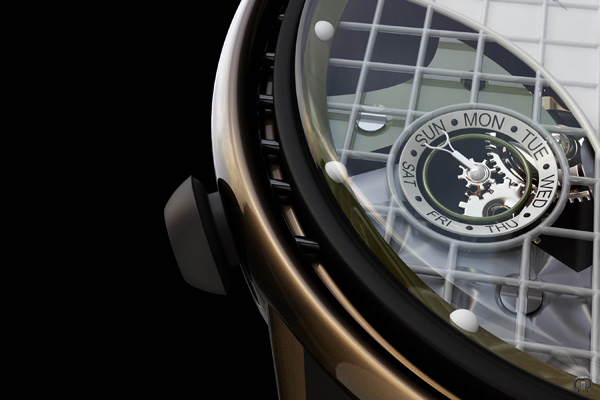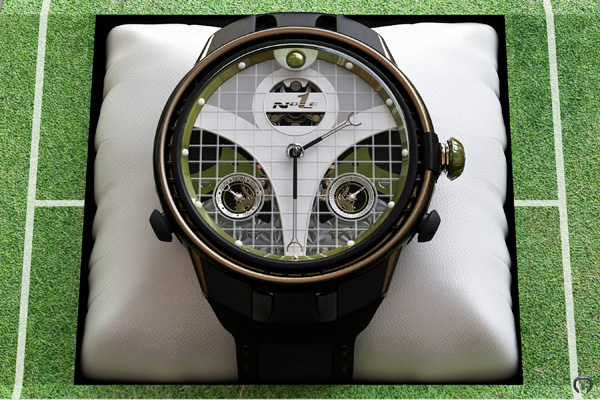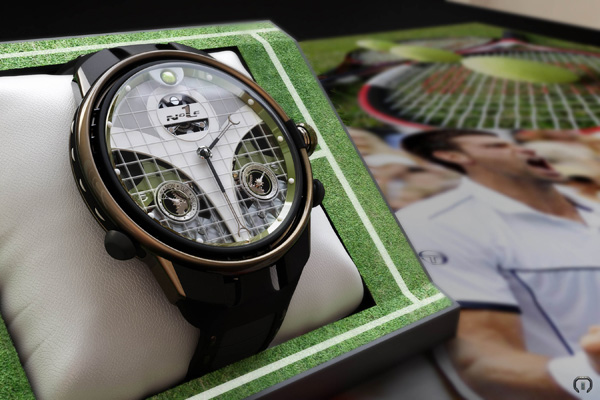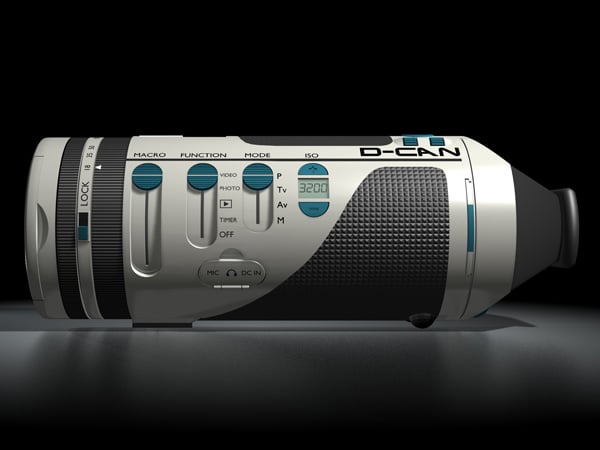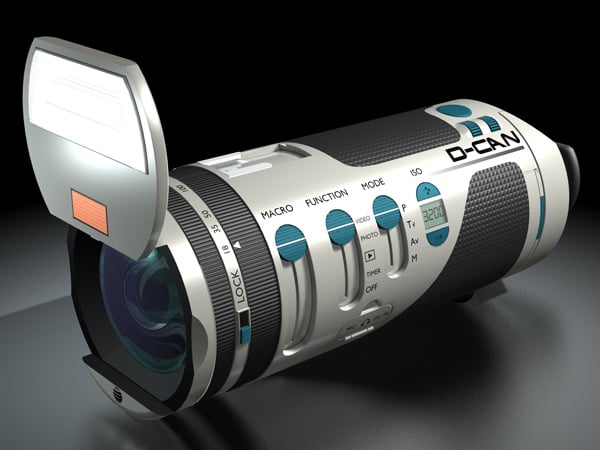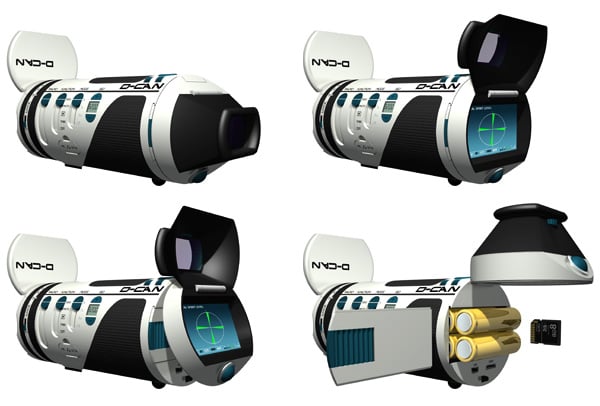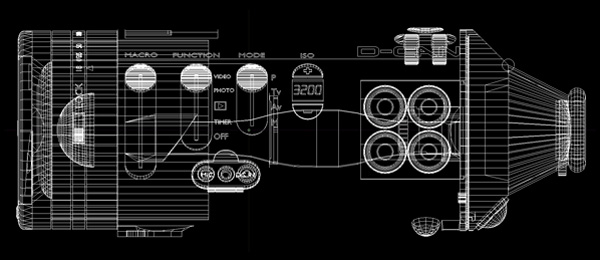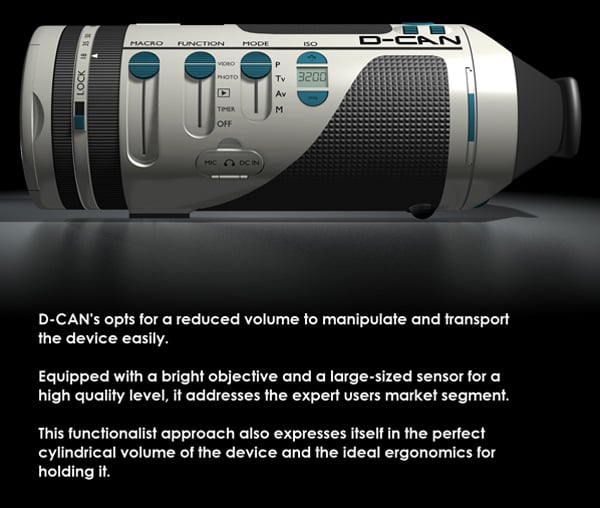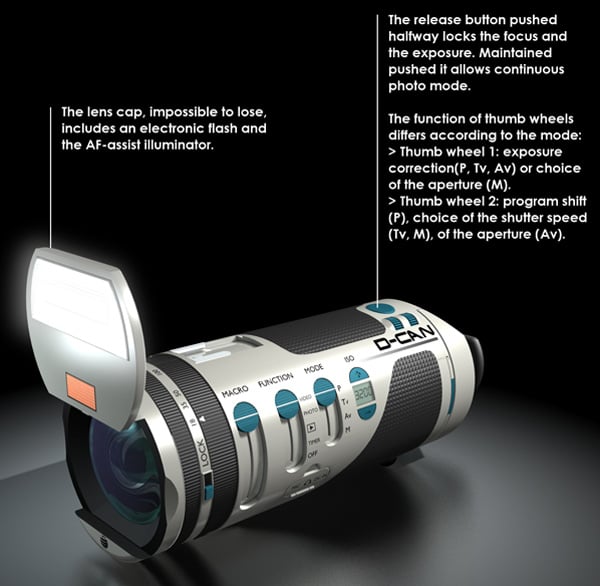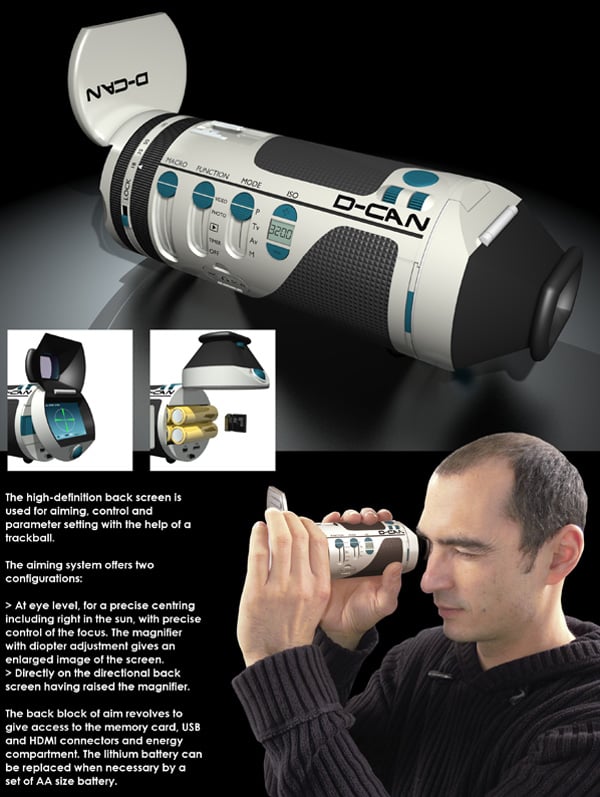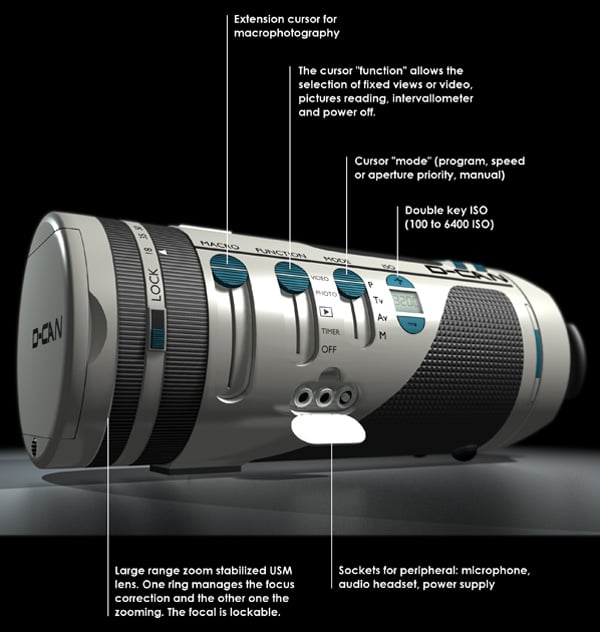Buying Guide: Best kit lens upgrade for Canon DSLRs: 10 tested:

Zoom lens upgrades explained
Canon offers a number of standard zooms with DSLR bodies as camera kits, which is why they're often referred to as kit lenses. For example, the official kit lens for the EOS 1100D and 600D is the EF-S 18-55mm f/3.5-5.6 IS II. For the 60D, it's the more upmarket EF-S 17-85mm f/4-5.6 IS USM.
The main advantage of buying a body complete with a kit lens is that the overall package is substantially discounted, so you'll save money. They offer a versatile focal length range (18-55mm) in a small package. However, it's difficult to shake the feeling that kit lenses are often built down to a price rather than up to the highest standards.
Since most of us use our standard zoom lenses for the vast majority of our shooting, it makes sense to invest in a quality option.

The first thing to think about is zoom range. For the purposes of this group test, we're concentrating on APS-C format cameras such as the EOS 1100D, 600D, 60D and 7D. As with previous models in their class, they all have Advanced Photo System - Classic image format sensors, which are rather smaller than those in full-frame DSLRs such as the 5D Mark II.
The upshot is that you need to apply a focal length magnification factor or 'crop factor' of 1.6x to calculate the effective focal length of a lens.

An 18-55mm kit lens will therefore provide an effective zoom range of 29-88mm. And 29mm gives you a fairly generous wide angle of view, whereas 88mm offers a useful short telephoto length that's ideal for portraiture.
A lens such as Canon's EF-S 15-85mm pushes the boundaries at both ends, giving a more versatile 24-136mm zoom range, but there's always a danger that greater range will impair optical quality.
You can use any full-frame lens on an APS-C camera, but you can't use an APS-C lens on a full-frame body. If you're thinking of trading up to a full-frame DSLR at some point in the future, it's worth taking full-frame standard zooms into account.
Indeed, when the Canon 40D was launched back in 2007, it had a choice of two kit lenses. One was the full-frame EF 28-135mm, the other was the APS-C format EF-S 17-85mm.
There are pros and cons in using a full-frame standard zoom on an APS-C camera. The main plus point is that you'll only be using the central area of the image circle, where image quality is at its sharpest.
You'll also run less risk of vignetting (darkened corners of the frame), especially when combining the wide-angle end of the zoom range with the widest available aperture.
The downside is that you simply won't get the wide-angle coverage enabled by a specialised APS-C lens. However, you can counter this by teaming up a full-frame standard zoom with an ultra-wide zoom such as the Canon EF-S 10-22mm.
Zoom and focus
Internal focusing is a useful feature that's shared by all the lenses in this group. The front element doesn't rotate during focusing, which makes circular polarising filters and graduated filters much easier to use. It also means the lens doesn't extend in length throughout the focus range.
When it comes to zooming, all the lenses on test physically extend as you progress through the zoom range, apart from the Sigma 18-50mm f/2.8-4.5 DC OS HSM, which has a fully internal zoom mechanism.
For autofocus, basic micro-motor actuators can be noisy and sluggish in operation; both the Tamron SP AF 17-50mm f/2.8 XR Di II VC and the Tamron SP AF 28-75mm f/2.8 XR Di LD feature these.
All the other lenses on test here have ultrasonic autofocus systems (USM), which Sigma calls hypersonic (HSM). You can expect quieter, faster autofocus - but not all ultrasonic systems are created equal. The Sigma 18-50mm, Sigma 17-70mm f/2.8-4 DC Macro OS HSM and Sigma 17-50mm f/2.8 EX DC OS HSM all have a small ultrasonic motor that requires gears to drive focusing.
The Sigma 24-70mm f/2.8 EX DG IF HSM, the Canon EF-S 15-85mm f/3.5-5.6 IS USM, the Canon EF-S 17-55mm f/2.8 IS USM, the Canon EF 24-105mm f/4L IS USM and the Canon EF 24-70mm f/2.8L USM all have a more advanced 'ring-type' ultrasonic system.
This is faster, near-silent and the focus ring doesn't rotate during focusing, plus you get the benefit of full-time manual override of autofocus in One Shot AF mode.
How good is your Canon EF-S kit lens?
What price a kit lens? If you buy them separately they range in cost from the £150 EF-S 18-55mm f/3.5-5.6 IS II (1100D, 600D) through the EF-S 18-135mm f/3.5-5.6 IS (7D) at £350, to the EF-S 17-85mm f4-5.6 IS USM (60D) at £360. They have their good points, but none of them are perfect.
The baby EF-S 18-55mm is very compact and well-balanced on lightweight bodies such as those of the 1100D and 600D. It also features Canon's latest 4-stop image stabiliser, complete with panning and tripod detection. Image quality is pretty convincing throughout the zoom range, but build quality is very basic.
The mounting plate is made of plastic rather than metal, the front element rotates in focusing, there's no focus distance scale and autofocus operation is based on a standard micro-motor.
Moving up, the EF-S 18-135mm features the same new IS system but is better built than the 18-55mm, with a metal mounting plate. But it still lacks USM autofocus and a focus distance scale. It's a poor match for the sophisticated and super-fast 7D.
The EF-S 17-85mm is an older design with only a 3-stop stabiliser, but it does at least have ring-type ultrasonic autofocus. Based on our tests, its only real flaw is that chromatic aberrations (colour fringing) are a major problem.
Fringing is often very noticeable in images, especially those taken towards the wide-angle end of the zoom range.
Canon EF-S 15-85mm f/3.5-5.6 IS USM

Canon EF-S 15-85mm f/3.5-5.6 IS USM - £610
With a class-leading 5.7x zoom range, this lens offers the widest-angle focal length in the group (on an APS-C camera), equivalent to just 24mm. The closest other lenses come is 27mm, and the difference is very noticeable when you want to exaggerate perspective or squeeze more into a shot.
The effective 136mm maximum telephoto setting is equally useful, making the EF-S 15-85mm the most versatile lens in the group.
The range comes at a price in both purchase cost and a slight compromise in image quality. There's a little colour fringing in the corners of the frame shooting at wide-angle zoom settings, and when you combine the widest 15mm focal length with apertures greater than f/5.6, vignetting is clearly visible.
We've criticised the lens in the past for this but, with peripheral illumination correction available on all current Canon DSLRs, it's less of an issue. Vignetting and colour fringing can also be tuned out if you shoot in raw and process shots with Digital Photo Professional.
Build quality is very sturdy and the lens is reasonably compact. Sharpness proved exceptional in our tests. For a standard zoom lens that goes the extra mile, it's hard to beat.
Canon EF-S 17-55mm f/2.8 IS USM

Canon EF-S 17-55mm f/2.8 IS USM - £770
This is the nearest thing to a fully professional, L-series lens in Canon's stable, even if Canon never applies the 'Luxury' tag to EF-S lenses. The zoom range is quite modest and image stabilisation is of an older, 3-stop generation, but image quality is sublime.
The build feels particularly rugged and hard-wearing, and the upsized manual focus ring (compared with the EF-S 15-85mm) makes for silky smooth manual override of autofocus. This ability is thanks to the advanced, ring-type autofocus system featured in all of the Canon lenses on test.
A major attraction of this lens over the EF-S 15-85mm is its f/2.8 maximum aperture, which remains constant throughout the zoom range. This enables you to keep shutter speeds up in gloomy conditions, as well as delivering a really tight depth of field, especially at the long end of the zoom range.
The bokeh (quality of defocused areas of the image) is very pleasing, making the lens ideal for portraiture.
Distortions, colour fringing and vignetting are well controlled, while sharpness and contrast are fabulous. It's the most expensive APS-C lens in the group, but well worth the money.
Canon EF 24-70mm f/2.8L USM

Canon EF 24-70mm f/2.8L USM - £990
A mammoth among standard zoom lenses, this full-frame model is the biggest and heaviest in the group, weighing in at nearly a kilogram. That's five times the weight of the baby EF-S 18-55mm kit lens and, on a camera like the Canon EOS 600D, it feels more like a telephoto zoom.
Uniquely in this group, the lens is at its most self-contained at the longest zoom setting of 70mm, and physically stretches in length as you zoom towards 24mm.
As with the other L-series lens in the group, build quality is extremely robust and luxuries include environmental seals to guard against dust and moisture. The rubber O-ring on the mounting plate is a confidence booster when shooting in the rain, as it greatly reduces the risk of water entering the camera.
Image quality is very good on both APS-C and full-frame cameras, but it's not perfect. Distortions and colour fringing are well restrained, and vignetting is basically a non-issue on APS-C cameras.
However, sharpness proved only average in our tests, which was disappointing given the lens's huge asking price. In practical terms for everyday shooting, the lack of image stabilisation is also a letdown.
Canon EF 24-105mm f/4L IS USM

Canon EF 24-105mm f/4L IS USM - £920
Like the other full-frame lenses in the group, this one lacks wide-angle potential on an APS-C camera but redeems itself with the longest telephoto reach, equivalent to 168mm.
Unlike the even-pricier Canon EF 24-70mm, this lens has image stabilisation offering a 3-stop benefit in beating camera-shake. The maximum aperture is one f/stop smaller but stays constant throughout the zoom range, enabling tight depth of field at longer focal lengths.
Despite its longer reach, the lens is smaller and rather lighter than the EF 24-70mm, yet maintains the same professional build quality, complete with weather seals. Distortion and vignetting at the wide-angle end are more pronounced than on the EF 24-70mm but are only really noticeable on a full-frame camera.
Sharpness is excellent throughout the entire zoom range, and colour fringing is minimal. Autofocus is extremely fast, practically silent and extremely accurate.
As a full-frame lens for use on either an APS-C or full-frame body, the EF 24-105mm has a lot going for it. It's actually the kit lens for the mighty 5D Mark II and, unlike Canon's other kit lenses, feels a perfect match for a pro camera.
Sigma 17-50mm f/2.8 EX DC OS HSM

Sigma 17-50mm f/2.8 EX DC OS HSM - £570
Sigma's answer to the Canon EF-S 17-55mm is more compact and lightweight, and costs £200 less, but it offers many of the same attractions. The zoom range is similar and the fast f/2.8 maximum aperture remains constant throughout the zoom range.
There's also Sigma's proprietary optical image stabiliser, which beats the Canon with a 4-stop benefit. It'll also focus a little closer, giving a higher 0.2x maximum magnification factor.
Autofocus is ultrasonic but not as fast or near-silent as the ring-type system on the Canon lens. The Sigma also lacks full-time manual focus override, and the focus ring rotates during autofocus, which is a bit of a letdown when it comes to handling.
Vignetting is only really noticeable when combining the widest-angle zoom setting with the maximum f/2.8 aperture but, unlike Canon lenses, this can't be tuned out in DPP.
At f/2.8, sharpness is very good at the centre of the frame but drops off near the edges. That's usually not a problem; you'll most often use this aperture setting when you want to blur the background anyway. At f/4 and smaller apertures, sharpness is excellent across the whole frame. Overall, a cracking lens for the money.
Sigma 17-70mm f/2.8-4 DC Macro OS HSM

Sigma 17-70mm f/2.8-4 DC Macro OS HSM - £350
With its generous zoom range and fairly fast maximum aperture of f/2.8, decreasing to f/4 at 50-70mm focal lengths, the Sigma looks an attractive proposition at the price. The effective zoom range works out to 27-112mm, which gives plenty of scope, especially at the telephoto end.
It also focuses closer than other lenses in the group, giving a maximum magnification factor of 0.37x at 22cm and earning a 'Macro' label. Optical stabilisation lives up to its 4-stop claims.
Barrel distortion is very noticeable in the 17-24mm section of the zoom range but colour fringing is well controlled. Vignetting is apparent at f/2.8 but disappears at apertures of f/4 or smaller.
The sharpness of our review sample proved a hit and miss affair. Sometimes the ultrasonic autofocus system was very accurate whereas, on other occasions, it focused in front of or behind the target.
Some Canon bodies, such as the EOS 50D, have an autofocus fine-tune feature but this wouldn't cure the problem because of the lens's lack of consistency. It's a shame because, in other respects, the 17-70mm is a very good performer and costs a bit less than the Canon EF-S 17-85mm kit lens.
Sigma 18-50mm f/2.8-4.5 DC OS HSM

Sigma 18-50mm f/2.8-4.5 DC OS HSM - £175
Remarkably inexpensive, the Sigma 18-50mm barely costs more than the humble Canon EF-S 18-55mm kit lens supplied with the Canon EOS 1100D and 600D. Build quality is better, with a more robust feel and a metal rather than plastic mounting plate.
You get a 4-stop optical stabiliser, which matches the Canon for performance, plus ultrasonic autofocus rather than a basic micro-motor.
Autofocus is quieter than with the Canon kit lens, but no faster. Neither lens has full-time manual focus override; however, at least the Sigma has a front element that doesn't rotate during focusing.
Rotation-specific filters such as a circular polariser are therefore much easier to use. During our tests, this lens suffered none of the autofocus inconsistencies of the Sigma 17-70mm.
Sharpness is pretty reasonable at the centre of the frame but a little lacking towards the edges and corners. Performance is respectable in terms of vignetting, colour fringing and distortions but, for overall image quality, we couldn't see any improvement compared with the Canon EF-S 18-55mm lens.
Ultimately, it's not really worth considering as an 'upgrade' but it's still a good buy if you need a standard zoom and you're on a very tight budget.
Read the full Sigma 18-50mm f/2.8-4.5 DC OS HSM review
Sigma 24-70mm f/2.8 EX DG IF HSM

Sigma 24-70mm f/2.8 EX DG IF HSM - £640
Here's another money-saving opportunity in the rather squat shape of Sigma's fast, constant-aperture, full-frame zoom. It's less than two-thirds the price of the competing Canon 24-70mm lens and, like the Canon, lacks stabilisation but boasts super-fast, near-silent ring-type ultrasonic autofocus.
The Sigma is shorter than the Canon but has a wider circumference to accommodate its large front element, reflected by its huge, 82mm filter thread.
Despite the oversized front element, vignetting is quite pronounced on a full-frame camera, especially at the 24mm wide-angle zoom setting, even when the aperture is reduced by two stops to f/5.6. It's less of an issue on APS-C cameras, where the image circle is cropped and vignetting is barely noticeable.
Sharpness proved a tad disappointing at the largest aperture, especially at the wide-angle end of the zoom range. At midrange and telephoto lengths, we still needed to reduce the aperture to f/5.6 for good sharpness across the whole frame.
But from a handling perspective, the lens feels solid and well built, and more conventional than its Canon equivalent in that its physical length increases towards the telephoto end of the zoom range.
Tamron SP AF 17-50mm f/2.8 XR Di II VC

Tamron SP AF 17-50mm f/2.8 XR Di II VC - £345
There's a lot to like about this lens. The fast f/2.8 maximum aperture is constant throughout the zoom range and it features Tamron's potent 4-stop optical stabiliser (Vibration Correction). This puts it in competition with Canon's EF-S 17-55mm f/2.8 lens but the Tamron is smaller, lighter and less than half the price.
Build quality feels reassuringly good and the lens bears Tamron's SP (Super Performance) stamp. One area that could be improved, however, is that autofocus is based on a humble micro- motor and is a little sluggish and noisy as a result.
It's certainly no match for the ring-type ultrasonic system fitted to Canon's 17-55mm, or the similar USD (UltraSonic Drive) featured in Tamron's more recent 70-300mm telephoto zoom lens.
We tested this lens a couple of years ago and weren't massively impressed with its image quality. But Tamron seems to have upped its game, as the sample we received this time was very sharp throughout the zoom range, even at f/2.8. Distortions and vignetting are well controlled, with colour fringing negligible.
At the price, the lens is a great option for anyone wanting a fast-aperture standard zoom without paying over the odds.
Read the full Tamron SP AF 17-50mm f/2.8 XR Di II VC review
Tamron SP AF 28-75mm f/2.8 XR Di LD

Tamron SP AF 28-75mm f/2.8 XR Di LD - £355
At little more than half the weight of the Canon EF 24-70mm full-frame lens, this one is also much more compact and only about a third of the price. Despite this, it features a fast, constant f/2.8 aperture and, like the Canon, lacks image stabilisation.
It's a sign of market forces that Tamron felt the need to update the 17-50mm APS-C version of this lens to fit Vibration Correction, but didn't do so with the full-frame 28-75mm.
Vignetting is very pronounced on full-frame cameras but the crop factor of APS-C bodies bypasses the problem. Fitting the lens to APS-C bodies also masks a lack of sharpness at the corners of the frame, especially when using large apertures of f/2.8 to f/4.
However, on cameras such as the Canon EOS 600D and 60D, the effective zoom range of 45-120mm really does lack any wide-angle potential. Indeed, the widest effective focal length is much closer to the 50mm of a 'standard' prime lens.
All things considered, it's not a particularly good lens for full-frame cameras and far from an ideal performer on an APS-C camera. For the latter, Tamron's 17-50mm f/2.8 VC is even less expensive and a much better buy.
Verdict: best zoom lens upgrade for Canons

Choosing the best standard zoom lens upgrade is almost too close to call. The Canon EF-S 15-85mm offers an unparalleled zoom range with very impressive image quality and the latest 4-stop image stabilisation. The Canon EF-S 17-55mm has a more meagre zoom range but slightly superior image quality and the bonus of a fast, constant f/2.8 aperture throughout the zoom range.
Ultimately, it boils down to whether you'd rather have extra zoom range or the ability to get faster shutter speeds without increasing ISO in gloomy conditions, along with a tighter depth of field.
For us, the EF-S 17-55mm just about wins out. The Sigma 17-50mm f/2.8 is very close behind but features a more basic ultrasonic autofocus system that's slightly slower and lacks full-time manual override.
On a tight budget, Tamron's 17-50mm f/2.8 offers unbeatable value.
For a full-frame compatible lens, the Canon EF 24-105mm is the one to go for. It beats all the other full-frame lenses tested for image quality, and is the only one to feature image stabilisation.
Source : Google Reader
